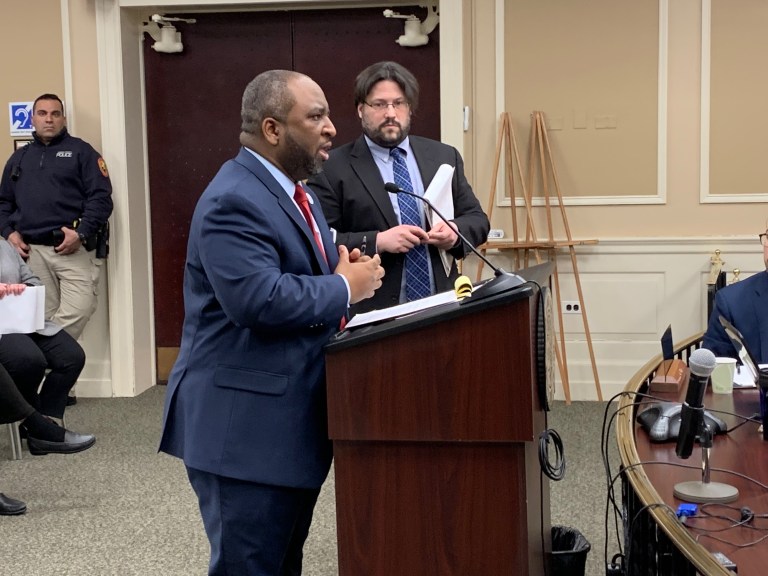
The North Hempstead Town Board approved amendments to the telecommunications law at Tuesday’s meeting that address the installation of cell nodes on the town’s rights of way.
Cell nodes are being installed across the country to facilitate the incoming 5G network, which is expected to be faster and more cost-effective than its predecessor.
“The federal law and regulations require us to allow these kinds of developments,” North Hempstead Town Supervisor Judi Bosworth said. “The town desires to attain as much authority and flexibility with regard to installing wireless telecommunications facilities within the town’s rights of way.”
She said she has written a letter to the town’s federal representatives requesting that they urge Congress and the Federal Communications Commission to update the applicable laws to allow smaller municipalities to have a voice on telecommunications development.
Chief Deputy Town Attorney Michael Kelly then discussed the additions to the resolution since the last public hearing.
Among the updates Kelly mentioned were a requirement to notify residents of a public hearing on a cell node who live within 350 feet of the right of way rather than only the residents along the right of way. Cell nodes would also be subject to random radiation and frequency emission testing, and the distance that a cell node must be from a school was increased to 350 feet from 200.
Other provisions include requiring cell nodes to be at least 1,500 feet from one another, and requiring that they not interfere with access to public health or safety equipment, and not obstruct pedestrian or vehicular traffic or public use of the right of way. If mounted in the ground they cannot be installed adjacent to the front of the home.
When mounted on a right-of-way structure, the town restricts wireless network antennas from extending further than two feet from the top or from being mounted less than 12 feet from the ground.
When installed on a street light pole in a residential zoning district, the antenna cannot exceed further than two feet from the top of the pole.
All telecommunications equipment must be colored to be consistent with the structure it is attached to or other objects surrounding it.
Bosworth said that while the board is guided by the federal guidelines, it is making the town’s telecommunications law as protective as possible.
Brandon Ray, the regional director for external and legislative affairs of AT&T, said during public comment that the company wanted to work with local municipalities regarding amendments and changes to find what is best for everybody.
He said that while some people have concerns, a lot of people want to see wireless coverage strengthened.
He submitted a research poll that AT&T and a third party agency conducted in September which he said found that 90 percent of participants believe it is important for local governments to attract high-speed internet solutions.
“I want to make sure we can find the best opportunity for both the government and the industry as a whole,” Ray said.






